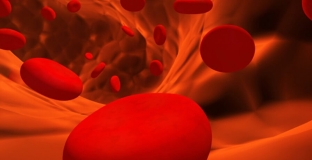Membrane plasmapheresis – method of efferent therapy, which is widely used in resuscitation and detoxification. Its essence lies in filtering the blood with a special plasma filter, which allows you to clean it from toxic products. The main difference between plasmapheresis and other detoxification methods is that during this procedure, the physiological function of the kidneys and other excretory organs is performed by the apparatus, which allows you to purify the blood with minimal energy costs. What are the indications for membrane plasmapheresis, read more on estet-portal.com.
Indications for use of membrane plasmapheresis
Now the procedure is used not only for the treatment of acute and severe poisoning, but also in the treatment of many chronic diseases, as a result of which pathological metabolic products are formed in the human blood. This procedure today has a very wide application in medical practice, according to estet-portal.com.
Main indications for membrane plasmapheresis:
- Atherosclerosis. Impaired lipid metabolism is manifested by the formation of atherosclerotic plaques on the inner wall of the vessel, which, in the process of increasing, can block their lumen and cause complications such as heart attack or stroke.
Intermittent plasmapheresis allows you to control the level of cholesterol and other lipids in the blood and thereby prevent the described complications.
- Consequences of radiotherapy and chemotherapy. These methods of cancer treatment are accompanied by a strong toxic effect on the human body, which is caused by exposure to metabolic products of cancer cells. Membrane plasmapheresis is often used to remove these toxic substances from the blood.
- Chronic intoxications caused by the constant use of alcohol, drugs or medications. In developed countries, the membrane plasmapheresis technique is included in the mandatory list of procedures for the treatment of drug and alcohol addictions.
- Autoimmune diseases. Thyroiditis, hepatitis, orchitis and other pathologies caused by the formation of pathological immune complexes respond very well to treatment using membrane plasmapheresis.
- Rhesus conflicts, antiphospholipid syndrome, latent urogenital infections and various types of toxic poisoning are also indications for membrane plasmapheresis.
What are the types of membrane plasmapheresis?
From a technical point of view, there are two methods of membrane plasmapheresis - filtration and gravity. The first method of blood purification fully corresponds to its name.
When performing plasmapheresis, in this case, the blood enters a special apparatus, where it passes through a system of filters that trap toxic products.
At the exit, when the plasma returns back to the bloodstream, it is cleared of the products of pathological metabolism.

The gravity plasmapheresis technique is based on centrifugation technology. Blood, after it enters a special apparatus, rotates at a very high speed, as a result of which toxic substances are separated from its liquid part. Further, as in the previous method, the plasma returns back to the bloodstream.
It should be noted that membrane plasmapheresis is only a technical side of therapy and, in principle, does not affect the result of treatment. The choice of one or another device depends on the technical equipment of the medical center. Indications for membrane plasmapheresis by both methods are exactly the same.







Add a comment